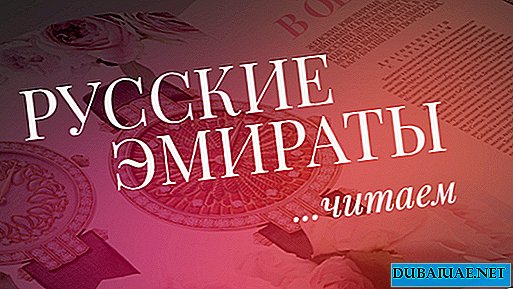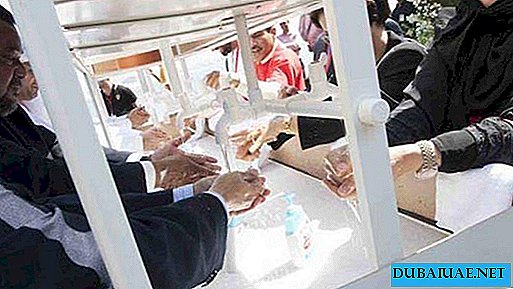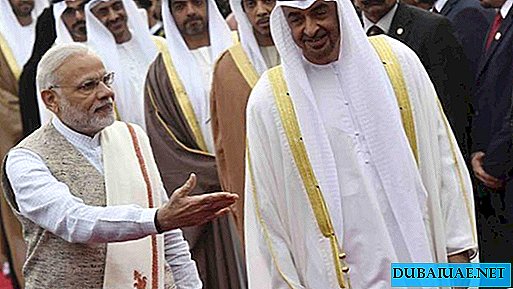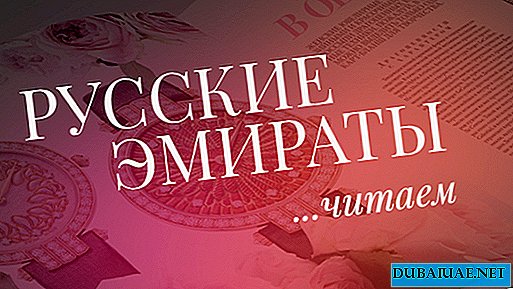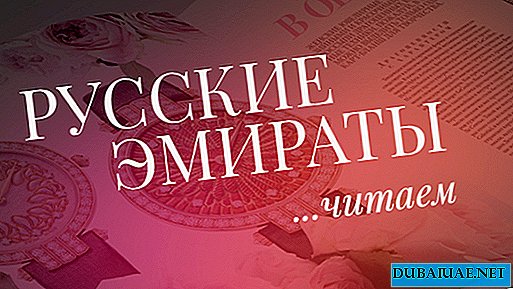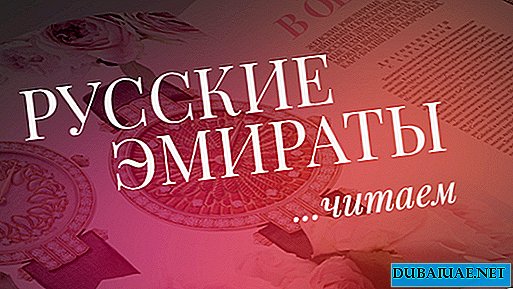Text: Elena Grunitz
Kalid Al Mulla, director of Easternmen & Co coffee company and founder of the region’s first and only coffee museum located in the historical district of Dubai, Bastakia, was recognized as the best specialist in Arabic coffee, its history and traditions in the country.
"Our company Easternmen & Co is engaged in everything related to coffee: importing various types of beans, roasting and selling them, purchasing and distributing equipment from leading manufacturers in the world. But every time we take part in any exhibition or fair and exhibit at At the booth, some exhibits from our museum, visitors and potential partners are primarily interested in the history of these objects, their origin and related traditions, forgetting about business for a while, and this is not surprising, because our region is East Africa and the Arabian Peninsula is the lullaby of the art of cultivating and making coffee. This drink is an integral part of the cultural heritage and traditions of the Emirates. The custom to serve coffee to guests is a symbol of hospitality and friendliness. It is not for nothing that we have a tradition, especially on holidays, to greet visitors with a cup in government institutions fresh hot drink. "
Coffee ritual
“To prepare and serve coffee is a whole ritual that was practiced by the Bedouins and which we carefully store and pass from generation to generation. According to Arabic tradition, the entire process of preparing a drink takes place in front of the guest. First, the grains are fried on charcoal in a special pan, then they are crushed manually in a mortar, after which the coffee powder is mixed with water and spices (for example, saffron) in a large Dalla coffee machine and brewed for several minutes. Once coffee is ready, it is poured through a filter into a small serving allu "and then they serve guests, pouring into small cups, accompanying the drink with dates.
No real sugar is added to real Arabic coffee, the same goes for milk. On the Arabian Peninsula, unlike Turkey, they only drink black coffee! In general, for us, drinking coffee is not just pouring a hot drink into ourselves. This is a real celebration not only for the senses, but also for the soul. "
The best
"They often ask me: which coffee is the best? It is impossible to designate any type of coffee as the best in the world. It's like with cars - there is the highest category, there is the middle, and then everyone else.
So, the highest category of coffee varieties include such as the Hawaiian "Kona", the Guatemalan "El Inherto", or the "Blue Mountain" from Jamaica ... "Mine Luwak"? Coffee is like coffee, even though it’s the most expensive in the world ... I personally, having tried almost all existing coffee varieties in the world, prefer Ethiopian medium roasted, brewed either in Arabic or in a French press. "
Coffee museum
“Our coffee museum officially opens in November 2014. Visitors will not only see objects telling the history of the drink from the 17th century to the present day, but they will also be able to taste various types of preparation: Arabic, Egyptian, Turkish, Ethiopian, Italian and even Japanese. The museum exposition includes a large number of not only local, but also European exhibits.Once a few years ago I visited the private coffee museum in Hamburg, owned by the German entrepreneur Jens Burg, I was so impressed with his huge a diverse and diverse collection that I told myself: “These exhibits should also be in Dubai.” And here they are - coffee grinders, coffee makers, toasters, dishes, books, historical documents ...
Our museum is a unique journey into the history of the world's favorite drink in the genuine atmosphere of the Middle East. By the way, Egyptian coffee is served to our visitors by an Egyptian, Arabic by an Arab, and Ethiopian by an Ethiopian girl. Thank you so much for supporting the creation of the museum to the Ministry of Culture of Dubai, as well as others. Hesse Lot and others. Monet al-Bahar. "
Prohibited…
At the beginning of the 15th century, in Egypt, Arabic coffee with cardamom gained such huge popularity that many hours of sitting for idle conversations in the coffee shop became a favorite pastime of Cairo residents, while mosques were empty during morning and evening prayers. For this reason, the authorities accused the innocent drink of violating moral principles, and, justifying their actions by the laws of the Koran, began to close coffee houses. But, despite the ban, the townspeople quietly continued to drink coffee at home, and law enforcement officers, in order not to undermine their own authority, had to make concessions. For very tricky concessions ... They introduced a tax on drinking coffee drinks. The treasury was rapidly replenished, and the inhabitants of Cairo continued to enjoy strong Arabic coffee in closed and specially designated places.
Top secret
The art of growing and making coffee in Arab countries has been a state secret for many years. The Arabs sought to maintain a monopoly on this drink and zealously ensured that not a single grain left their territory. That is why Europeans discovered coffee only in the middle of the XVI century, when the Venetian merchants still managed to smuggle several bags of coffee beans.
At first, they were used exclusively as a medicine against fatigue. And only after more than 50 years, in 1683, the first coffee house opened in Venice, where coffee was drunk for pleasure, and not for therapy. Coffee appeared in Russia even later, in 1740, when, by special order of the Empress Anna Ioannovna, the first coffee establishment was opened in St. Petersburg.
ARABIC OR ROBUST?
Arabica is not a type of coffee, as is commonly believed, but a type of coffee plant (tree or shrub). And a variety, in turn, is a type of product that includes origin, roasting, etc. There are two main types of coffee - arabica and robusta. And for some reason, it is generally accepted that arabica is good and expensive coffee, and robusta is bad and cheap.
This is not entirely true. The main differences between these types of coffee are in taste and in the cost of production. Arabica has a light, noble and fruity aroma with sourness, contains less caffeine and is harder to grow, since the plant itself is very sensitive to climate change, often gets sick and less likely to produce crops.
The name robusta, which is translated from Italian as “strong, strong,” speaks for itself. Stronger and tart, with a touch of wood and earth, taste, unpretentiousness during cultivation, more frequent and voluminous harvest. Yes, it’s true that it is mainly used to reduce the cost of mixtures and make instant coffee. But we should not forget that robusta is rosta different, as, indeed, is Arabica. There is a good and expensive robusta, just like worthless cheap arabica. Another advantage of robusta is its preparation. Everything is much simpler with it: the taste is rude, but understandable, unlike arabica coffee, which requires more precise settings for the coffee maker and compliance with the cooking parameters. Italians - lovers of strong coffee - for example, add up to 50% robusta to their espresso and do not really like pure Arabica. The whole secret of a good drink is in a mixture of these two varieties and, of course, in the personal taste of the consumer.
HOW TO CHOOSE THE COFFEE CORRECTLY?
According to Kim Thompson, general manager of RAW Coffee Company, it is important to consider the following factors when buying coffee: It is best to buy grains, not ground coffee. After the packaging is open, the whole flavor, and with it the taste, evaporates for two days. The best purchase for true coffee lovers is a coffee grinder. If you wish, you can mix different varieties of grains yourself, focusing on your own taste and mood.
If you still buy ground coffee, then no more than three weeks should pass from the date of its manufacture. Ground or beans - good coffee cannot be cheap. Quality has its price, otherwise you can just as easily switch to a soluble drink.
LOVELY FACTS ABOUT COFFEE
After oil, coffee is the best-selling product in the world.
Despite the fact that Brazil is the largest coffee producer in the world (40% of the global stock), Finland is the most drinkable coffee. For one Finn, 12 kg of coffee per year. The most “non-drinking” country is Puerto Rico (only 400 g per person).
According to some studies, coffee has antioxidant and antidepressant properties. You can die from coffee, but only if you drink more than 80 cups within 4 hours.
Yogan Sebastian Bach loved this drink so much that he dedicated his Coffee Cantata to it. Every day the great composer counted exactly 60 beans of his favorite variety, smashed them with his own hands, and only then, having enjoyed fresh hot coffee, began to create. Salt in coffee: to emphasize the taste of the drink, some gourmets, following Ethiopian traditions, add literally one crystal of salt to the water of the coffee maker. A “Russian coffee” with the addition of vodka was invented not in Russia, but in Germany. They also drink coffee with the addition of garlic, red pepper, pumpkin, coconut, orange, champagne, eggs ... And someone drinks it just black.
The most expensive coffee grows in Sumatra and is called Kopi Luwak. Its high cost is explained by a rather peculiar method of primary processing. The fruits of coffee are collected and fed to the animal, the Luwak, from which after some time comes out what is then sold for 1000 euros per kilogram. In the digestive system of this small animal, grains undergo fermentation processes that cannot be carried out in the laboratory. And it is precisely these processes that give coffee beans that unique aroma that is so highly valued by wealthy coffee lovers in New York and London.
IT IS INTERESTING
According to legend, goats became the pioneers of coffee. Somewhere in the middle of the eighth century, in the territory of modern Ethiopia, a shepherd named Kaldi, tired of his ever-awake herd, turned to monks from a nearby monastery for help and told them that since the sheep became addicted to strange red berries growing in the trees near the shepherd’s hut, they practically stopped sleeping. The monks picked the berries and, after numerous attempts, learned to process the fruits into an invigorating drink, which became many centuries later a symbol of good morning all over the world.
Yemen is considered the second homeland of coffee, where its mass cultivation began in the 11th century. From here came not only the name "coffee" (from the Arabic "kahwa"), but also a kind of coffee tree arabica.
There, for the first time, coffee began to be roasted on hot stones. Some time later, along with the Muslim faith, the art of making this drink spread in North Africa and especially in Turkey. That is why ordinary people often confuse Arabic coffee with Turkish.



